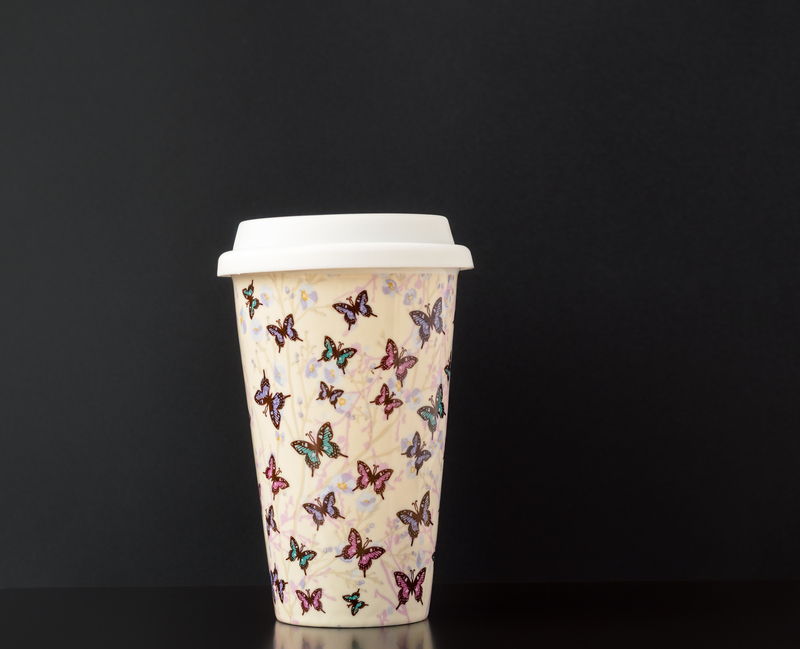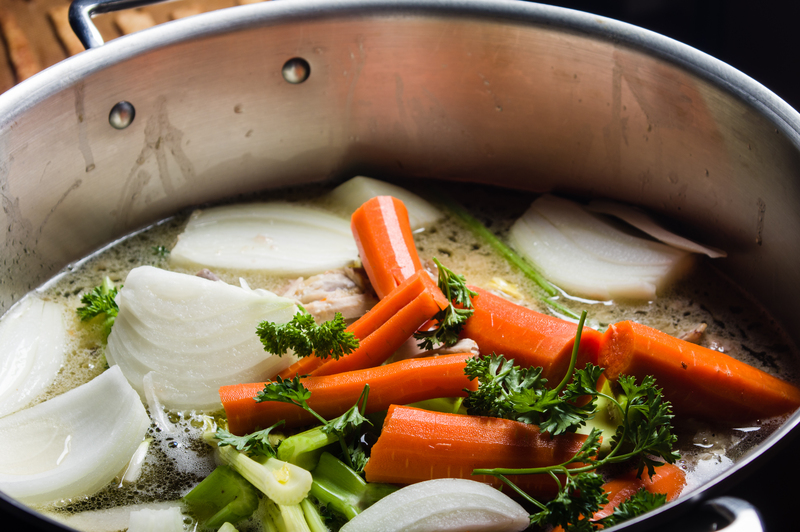Understanding Plastic Risks: Which Plastics Should Be Avoided?
Plastics are an integral part of modern life, from packaging and household items to medical devices and electronics. However, not all plastics are created equal. Some types of plastic have been extensively linked to health risks and environmental harm. Identifying which plastics pose risks and should be avoided is crucial for safeguarding personal wellbeing and making eco-conscious choices. In this comprehensive guide, we'll uncover the potentially hazardous plastics, decode their symbols, and offer practical advice to minimize exposure.

What are Plastics Made Of? An Overview
Plastics are synthetic materials derived primarily from petrochemicals. They are formed by polymerizing small molecules, called monomers, into long chains. Each type of plastic has unique properties, determined by its chemical structure and additives. Knowing the components and manufacturing process of plastics is the first step to understanding their potential dangers.
- Monomers: Basic building blocks like ethylene, propylene, styrene, etc.
- Additives: Chemicals added to enhance flexibility, durability, color, or flame resistance, such as phthalates, BPA, or PBDEs.
While plastics have made life more convenient, the presence of potentially hazardous additives and the way plastics interact with heat, food, and the environment raise significant health and ecological concerns.
Plastic Identification Codes: The Key to Knowing the Risks
Most plastic products bear a resin identification code -- a number usually inside a triangle, often on the bottom of the item. These codes range from 1 to 7 and correspond to specific plastic types. Understanding what each code means is essential for recognizing which plastics to avoid for health and safety.
- 1 - PET or PETE (Polyethylene Terephthalate)
- 2 - HDPE (High-Density Polyethylene)
- 3 - PVC (Polyvinyl Chloride)
- 4 - LDPE (Low-Density Polyethylene)
- 5 - PP (Polypropylene)
- 6 - PS (Polystyrene)
- 7 - Other (including Polycarbonate, BPA, etc.)
While some plastics are relatively safer, others are associated with toxicological hazards, hormone disruption, and environmental threats. Let's examine the most concerning types.
High-Risk Plastics: Types to Avoid
Below we break down problematic plastics, why they're dangerous, and provide tips for safer alternatives.
1. Polyvinyl Chloride (PVC) - Resin Code 3
Polyvinyl Chloride (commonly known as PVC or "vinyl") is used widely in plumbing pipes, toys, packaging, shower curtains, and cling wrap. It's recognized for its flexibility and durability, but these properties come at a cost.
- Contains hazardous additives: PVC often includes phthalates for flexibility and lead or cadmium as stabilizers.
- Releases toxins: During manufacture, usage, and disposal, PVC can release dioxins, vinyl chloride, and other carcinogens.
- Linked to health issues: The chemicals leached from PVC can disrupt hormones, harm reproductive systems, and increase cancer risk.
Recommended action: Avoid PVC wherever possible, especially for food packaging, children's toys, and anything that may come in contact with heat.
2. Polystyrene (PS) - Resin Code 6
Polystyrene is a common plastic found in foam cups, takeout containers, egg cartons, and disposable cutlery. Also known as Styrofoam, PS is lightweight and inexpensive, but its risks are significant.
- Leaches styrene: The main component, styrene, is a suspected carcinogen and neurotoxin.
- Unsafe for hot foods: Heat increases chemical leaching, making PS unsuitable for coffee cups or reheating food.
- Environmental hazard: Difficult to recycle, contributes to massive ocean and landfill pollution.
Recommended action: Limit or eliminate use of polystyrene foodware and packaging. Opt for paper, glass, or compostable alternatives.
3. Polycarbonate and "Other" Plastics - Resin Code 7
"Other" plastics (labeled as Code 7) include a variety of materials, the most concerning of which is polycarbonate. Found in reusable water bottles, baby bottles, food containers, and medical equipment, polycarbonate often contains BPA (bisphenol A).
- BPA disrupts hormones: Known as an endocrine disruptor, BPA mimics estrogen, affecting the brain, development, and reproductive systems.
- Linked to chronic conditions: Studies link BPA exposure to obesity, diabetes, heart disease, and behavioral disorders.
- Heat and wear increase leaching: Scratches and repeated use release more BPA into food and beverages.
Recommended action: Choose BPA-free or alternative materials whenever possible. Look for glass, stainless steel, or safe polypropylene containers for food and drink storage.
Moderate-Risk Plastics: Be Cautious
Some plastics are generally considered safer but still pose risks under certain circumstances. Awareness is key to reducing potential exposure.
1. Polyethylene Terephthalate (PET or PETE) - Code 1
Widely used for water and soda bottles, as well as salad dressing containers, PET is lightweight and affordable.
- Single-use only: Not designed for repeated use or heat exposure; can leach antimony and other chemicals over time.
- Hygiene risks: Scratching and microbial buildup render reused PET bottles unsafe.
Recommended action: Use PET only for single use and recycle responsibly. Do not refill or expose to high temperatures.
2. Low-Density Polyethylene (LDPE) - Code 4
Common in plastic bags, bread wrappers, frozen food packaging, and squeezable bottles, LDPE is regarded as low-toxicity.
- Generally safe: Minimal concern for chemical leaching under normal use.
- Environmental impact: Widespread use in disposable packaging contributes to pollution.
Choose reusable bags and minimize dependency on single-use LDPE items to reduce waste.
3. Polypropylene (PP) - Code 5
Used in yogurt containers, medicine bottles, straws, and food storage, PP is heat-resistant and more stable than many other plastics.
- Low leaching risk: Suitable for hot liquids and microwaving.
- Still not biodegradable: Like other plastics, contributes to long-term environmental problems.
Use when necessary, but seek alternatives if possible or make sure to recycle properly.
Safer Plastics to Choose
Not all plastics pose the same level of danger. HDPE (code 2) and PP (code 5) are among the safest for food contact due to their chemical stability.
- HDPE (High-Density Polyethylene) - Code 2: Used for milk jugs, juice bottles, and detergent containers; resists leaching and is widely recycled.
- PP (Polypropylene) - Code 5: Microwave-safe, commonly used for yogurt cups, medicine bottles, and some food storage solutions.
Still, moderation and proper use are essential -- especially for items in contact with food or drink.
Why Certain Plastics Are Hazardous: Key Chemicals of Concern
1. Bisphenol A (BPA)
Used in polycarbonate plastics and epoxy linings of cans, BPA is infamous for mimicking estrogen and disrupting hormonal balance. Check labels for BPA-free products and prioritize glass or stainless steel containers.
2. Phthalates
Added to increase flexibility, especially in PVC. Phthalates are linked to reproductive issues, birth defects, and asthma. Avoid soft vinyl toys, shower curtains, and food wraps that may contain these plasticizers.
3. Styrene
Present in polystyrene, styrene is a possible carcinogen and neurotoxin. Avoid eating or drinking hot substances from foam cups or containers.
4. Dioxins
Toxic byproducts of PVC manufacturing and incineration. Dioxins are persistent in the environment and highly carcinogenic.
How to Identify and Avoid Risky Plastics
- Check the resin code: Avoid codes 3 (PVC), 6 (PS), 7 (Other; especially if it contains BPA).
- Opt for BPA-free products: Look for explicit labeling or choose known safer plastics.
- Avoid heating plastics: Never microwave food in questionable plastic containers or expose them to hot liquids.
- Support plastic alternatives: Glass, stainless steel, silicone, and ceramics are durable, non-toxic options.
- Reduce single-use plastic: Bring reusable bags, bottles, and food containers to cut down on disposable plastics.
- Be cautious with children's items: Choose products made from natural materials or explicitly labeled as free from harmful chemicals.
Environmental Concerns: Plastics Endanger the Planet
The issue of plastic pollution extends beyond personal health. Plastics, especially single-use varieties, overwhelm landfills, oceans, and natural habitats. Microplastics, created from the breakdown of larger items, infiltrate the food chain, all the way to human consumption.
- Persistence: Most plastics take hundreds to thousands of years to decompose.
- Wildlife hazards: Animals ingest or become entangled in plastics, leading to injuries and deaths.
- Microplastic ingestion: Harmful chemical additives can accumulate in fish, seafood, and ultimately the human diet.
Practical Tips for Reducing Plastic Risks
- Read codes carefully: Always inspect packaging and containers for resin codes, especially for items that will hold food or beverages.
- Invest in quality reusables: Choose stainless steel or glass bottles and containers for everyday use.
- Avoid microwaving plastics: Even microwave-safe plastics can degrade over time or leach unknown byproducts.
- Choose natural fibers: Opt for cotton, wool, bamboo, or hemp instead of synthetic clothing and textiles.
- Recycle properly: Know which plastics are accepted by your municipality and don't wish-cycle questionable items.
- Advocate and educate: Share knowledge with family, friends, and your community to foster more responsible plastic usage.

Conclusion: Navigating Plastic Risks with Confidence
Which plastics pose risks and should be avoided? The answer centers on PVC (code 3), polystyrene (code 6), and polycarbonate (often in code 7). These plastics can leach hazardous chemicals, disrupt hormones, and contribute excessively to global pollution. Moderation is required even with safer types like PET, especially for items in contact with food or exposed to heat.
Making informed choices reduces not only personal health risks but also helps curb the plastic pollution crisis. When in doubt, prioritize reusable, non-toxic alternatives, and always check the resin codes. Your actions, no matter how small, contribute to a safer, healthier future for yourself and the planet.
Frequently Asked Questions
Q: What is the most dangerous type of plastic for food?
A: Polyvinyl chloride (PVC, code 3), polystyrene (PS, code 6), and any plastic containing BPA (often code 7 "Other") are particularly hazardous for food contact due to their strong tendency to leach toxic chemicals.
Q: Are BPA-free plastics completely safe?
A: While BPA-free plastics remove a known endocrine disruptor, substitute chemicals like BPS and BPF may have similar negative effects. Glass and stainless steel remain the safest choices.
Q: Can I microwave food in plastic containers?
A: It's best to avoid microwaving plastics, even those labeled "microwave safe." Heat can degrade plastic and cause chemical leaching. Opt for microwave-safe glass or ceramic containers.
Q: How do I safely store food?
A: Use glass, stainless steel, or certified food-grade silicone containers. These do not contain harmful additives and do not leach dangerous chemicals, even when exposed to heat or acidic foods.
Q: What is the impact of plastic waste on the environment?
A: Plastic waste pollutes land and waterways, harms wildlife, and breaks down into microplastics that enter the food chain, ultimately affecting human health. Reducing plastic use and improving recycling efforts are essential for a healthy planet.
Make the switch to safer plastics and alternatives today--your body and the environment will thank you!